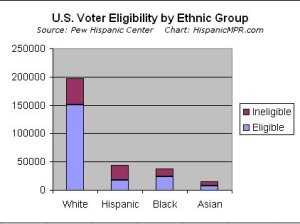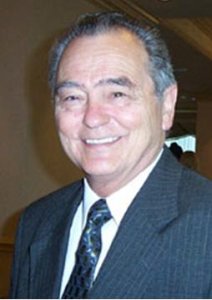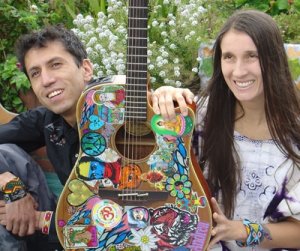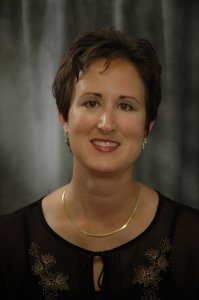Posted by Elena del Valle on October 17, 2006

William Ortiz, president, GlobalWorks Multicultural Division
Photo: William Ortiz
New York, New York — GlobalWorks Group LLC received four bronze Tellys for TV spots it created for Cablevision Systems Corp.’s digital services. The four 30-second spots target Hispanic and African-American consumers.
“We’re especially gratified to be among the circle of winners, given that our creative was judged in a competition that attracted entries from literally all over the world,” said William Ortiz, president, GlobalWorks Multicultural Division.
The Telly Awards competition attracts more than 12,000 entries annually, from all over the U.S. and many countries. The judges are advertising, production and other creative professionals, who are previous winners of Telly Awards.
“Soccer” was shot by Argentinean director Agustin Alberdi; the three African-American spots were directed by Scotty Bergstein. The spots were conceived and produced by GlobalWorks’ Hispanic and African-American creative teams, under the supervision of Caroline Fish and Takashi Omura, co-creative directors, and Anna Radzievsky, chief creative officer.
GlobalWorks is a New York-based advertising agency that delivers services for managing global brands. In addition to developing award-winning advertising campaigns across media and multicultural markets, GlobalWorks provides technology solutions to help marketers manage their brands worldwide. To view the winning spots, visit GlobalWorks.com
Posted by Elena del Valle on October 16, 2006
Click here to sponsor a HispanicMPR.com podcast

Cesar Melgoza
Photo: Geoscape International, Inc.
A podcast interview with Cesar Melgoza, president and founder, Geoscape International, Inc., is available in the Podcast Section of Hispanic Marketing & Public Relations, HispanicMPR.com. During the podcast, Cesar discusses the 3rd Annual Multicultural Market Intelligence Summit with Elena del Valle, host of the HispanicMPR.com podcast.
Cesar has been an innovator in the development of market intelligence data, systems and analytic services. In 1995, he formed Geoscape International to focus on the application of marketing intelligence services, data and technology towards the multicultural and multinational markets. He has led growth at Geoscape by developing products and services that provide geo-demographic, marketing and media data, highly predictive database modeling, and information enhancement systems. Most recently, he launched the Geoscape Intelligence System (GIS) and the DirecTarget® system for database enrichment.
Cesar’s career is a blend of information technology and market research. While completing his undergraduate degree at the University of California, Santa Barbara he helped build computer hardware for Information Magnetics Corp. While earning his master’s degree in at the University of Texas at Austin, César was a research associate at one of the first Hispanic market research companies and also at the University’s Center for Mexican American Studies. His master’s professional report, published in 1986 and entitled Hispanics in the New Economy, utilized advanced statistical research techniques and was awarded special recognition by the university.
In the late 1980s, he developed and led desktop mapping and workgroup computing initiatives at Apple Computer in Cupertino, California. He went on to lead marketing and international business development at venture-funded Strategic Mapping, Inc. where he was instrumental in achieving annual revenue growth from $2 million to $35 million in four years. Born in Michoacán Mexico, Cesar grew up in California and has been a resident of various rural and urban population centers in the U.S.
To listen to the interview, scroll down until you see “Podcast” on the right hand side, then select “HMPR Cesar Melgoza” click on the play button or download it to your iPod or MP3 player to listen on the go, in your car or at home. To download it, click on the arrow of the recording you wish to copy and save to disk. The podcast will remain listed in the October 2006 section of the podcast archive.
Click the button to hear the podcast:
Click here to sponsor a HispanicMPR.com podcast
Posted by Elena del Valle on October 13, 2006


“Mona Lisa” and “Girl with Pearl Earring” by Juliana Martinez
Photos: Juliana Martinez
A Northeast Los Angeles art gallery, jFerrari, will feature works from several Latino artists in its upcoming exhibit, “Baile de las calaveras.” From October 21 to November 1, 2006 gallery visitors will be able to see paintings by Eduardo Bonilla, Juliana Martinez, Ernesto de la Loza, and Ricardo Duffy.
“A baile is a dance, and if you see a group of people dancing, they are dancing to the same music, but each has their own approach. That is very much what this show is like,” said gallery owner Jazmin Ferrari.
Eduardo Bonilla’s talent was discovered early in his childhood. He has already had 35 exhibits and ten solo shows. Bonilla portrays the journey of his life in his paintings. Juliana Martinez was also an artist since childhood. The Puerto Rican born artist has made California her home. Her focus is on enjoying the present. Unlike so many others in her field she does not focus on social commentary.
Ernesto de la Loza uses a canvas of a different scale. He is a muralist in the Los Angeles community. Since 1974 he’s poured his life into murals through out California. Ricardo Duffy’s approach is at the other end of the spectrum. With a mixture of dry humor and social commentary Duffy displays his version of present day life. — Melissa Gonzalez
Posted by Elena del Valle on October 12, 2006

U.S. voters by ethnic group
Chart: HispanicMPR.com
According to the latest Pew Hispanic Center updates, 17.2 million Hispanics or 8.6 percent of voters, will be eligible to vote in 2006. That represents an increase of 7 percent over the 2004 election when there were 16 million Hispanic voters representing 8.2 percent of eligible voters in the country.
Native born Hispanics represent 75 percent of Latino voters while foreign born naturalized Hispanics represent 25 percent. Second generation Latino voters exhibited the largest percentage growth, 46 percent, among Hispanic voters since 2004. At the same time Latino voters represent a smaller share of the overall Hispanic population than similar voting segments in other ethnic groups because so many Latinos are underage or adult noncitizens.
According to the Pew Hispanic Center only 39 percent of Latinos may vote while 77 percent of nonHispanic whites and 65 percent of nonHispanic blacks are eligible to vote. In other words, of 200 million eligible voters, 150.8 are nonHispanic white, 24.1 million are nonHispanic black, 17 million are Latino and 7.4 million are nonHispanic Asian. The Center estimates that between 10 million and 12.3 million Latinos will register to vote by November 2006.
Posted by Elena del Valle on October 11, 2006
By Patrick Osio, Jr.
Editor, HispanicVista.com

Patrick Osio, Jr., editor, HispanicVista.com
Phot: Patrick Osio, Jr.
International borders are not about political lines dividing countries. Borders are about people living across each other separated by a political line. When people divided by borders are of different cultures, speak different languages and there is significant economic disparity between them the differences often become political problems.
In the Western Hemisphere most border political problems do not start, or are sustained, due to language or cultural differences. These differences may exacerbate the problems. The roots of most political problems exist where there is an economic disparity between the two divided nations. The greater the disparity, the greater the political problems.
Click here to read the complete article.
Posted by Elena del Valle on October 10, 2006


Scenes from the public service announcement
Photos: Creative Marketing Partners
Miami, Florida – The statistics are staggering: Motor vehicle accidents are the leading cause of death in the United States for Hispanics between 34 and under according to the National Highway Traffic Safety Administration (NHTSA). Organizers of a South Florida campaign to prevent drinking and driving, indicate that thirty percent of Americans will be involved in an alcohol-related crash in their lifetimes. Such accidents cause damages worth more than $50 billion a year according to a 2002 NHTSA study about the economic impact of crashes.
To counter this trend, a Miami car dealer, Esserman Nissan, donated $20,000 in production costs to develop a bilingual 30-second television public service announcement. The dealer’s advertising agency, Creative Marketing Partners (CMP), developed the campaign probono. The announcements began airing in South Florida stations the first week of October and will continue for a total of 12 weeks.
The spots have been airing in two Spanish language and three English language stations in Miami-Dade and Broward counties: WFOR (CBS), WTVJ (NBC), WSVN (Fox) in English and WLTV (Univision), WSCV (Telemundo) in Spanish.
After a decline of alcohol-impaired driving throughout most of the 1990s, a new study published in the May 2005 issue of the American Journal of Preventive Medicine, shows that driving while intoxicated has increased significantly and researchers believe it is linked to an increase in binge drinking.
National Highway Traffic Safety Administration (NHTSA) 2005 statistics indicate that alcohol-related deaths account for half of all Hispanic traffic-related fatalities. The Administration considers impaired driving a public health epidemic and places Hispanics at high risk.
In the spots, conceived and produced by CMP, two young men let the air out of the tire of a sporty Nissan parked outside a trendy nightclub. Minutes later, an obviously drunk driver stumbles to his car and realizes he cannot go anywhere because of the flat tire. The spot ends with the announcer saying: “Good friends will do anything to keep you from drinking and driving.”
The reaction from viewers has been extremely favorable, said Dick Assmar, vice-president of Esserman Nissan. “We did this because we are concerned by the fact that drunken driving statistics are on the rise. We are very pleased by the acceptance on the part of the media and the TV viewers.”
Esserman Nissan is a South Florida automobile dealer and the only recipient of Nissan’s Owner First Award of Excellence 5 years in a row. Creative Marketing Partners is a South Florida advertising agency that specializes in providing advertising and marketing services for automobile dealers, dealer advertising groups, and automobile manufacturers, as well as the real estate and health-care industries. To view the spots online visit: English version and Spanish version
Posted by Elena del Valle on October 9, 2006

Aterciopelados
Photo: Nacional Records
Aterciopelados, the platinum-selling, Grammy-nominated pop/alternative Colombian band is back. They will be releasing “Oye,” their first new studio album in five years on October 24. It is the follow up album to “Gozo Poderoso” and will include the single “Complemento” (Nacional Records)
With the critical and commercial success of their previous Grammy-nominated album “Gozo Poderoso,” Aterciopelados landed on the Top 10 of the Billboard Top Latin Albums chart and made an appearance on the “Tonight Show with Jay Leno.” Aterciopelados means velvet ones in Spanish.
Aterciopelados co-founders Andrea Echeverri (vocals, guitars) and Hector Buitrago (bass, arrangements, producer) each released solo albums in the past year (Echeverri’s received two Grammy nominations), building anticipation for the band’s new studio set. The new album was produced by Buitrago and mixed by Thom Russo (Johnny Cash, Juanes, Kinky).
“Oye” is described in promotional materials as an organic rock sound reminiscent of the band’s early work on albums like “La Pipa de La Paz” (Peace Pipe). “Complemento,” the album’s first single, is designed to be an upbeat declaration of love from someone who has found her soulmate. The album also features Aterciopelados’ trademark social and political commentary on songs like “Oye Mujer” which asks of women “are you a human being, or the erotic fantasy of some guy?” Another song, “Pace,” is a call to action for peace. In support of the new album, Aterciopelados will kick off a major market U.S. tour in late October and will return to the States for additional tour dates in 2007.
Aterciopelados formed in Bogota, Colombia in the early 90s debuting with the 1994 album “Con El Corazon en La Mano” rising to fame in Colombia and internationally. They have performed at the Hollywood Bowl and Mexico City’s Auditorio Nacional.
To listen to the single “Complemento” from the new album “Oye” click on the play button below.
Click the button to hear the podcast:
Click here to sponsor a HispanicMPR.com podcast
Posted by Elena del Valle on October 6, 2006


GoldLeaf Jewelry tiara and pendant for quinceañeras
Photos: GoldLeaf Jewelry
A Quinceañera, the Hispanic equivalent of a Sweet Sixteen celebration, can be the most memorable day in a young woman’s life. The preparations for it however, can be as stressful as a wedding. They can affect mothers reliving their childhood, fathers worried about losing their little girls and teenagers expected to be perfect and beautiful on their special day.
GoldLeaf Jewelry is attempting to take some of the stress away by offering for sale traditional tiaras, rosaries, and charms to help young Latinas celebrate their 15 birthday. The jeweler, one of several offering Quinceañera jewelry, specializes in 14K gold, with prices ranging from $100 to $700. The company works with more than 100 manufacturers from four continents to obtain quality materials.

Renada Dukalskis
“Throughout my research it became clear to me that not only could GoldLeaf meet a market need as a place where girls could go online for beautiful, traditional, high-end Quinceañera jewelry but that we could also become a leader in a segment where there isn’t one,” said Renada Dukalsis of GoldLeaf Jewelry.
Robert and Renada Dukalskis, a father-daughter team from Oregon, founded an online store specializing in jewelry for coming of age celebrations. Robert, who has many years of retail experience, focuses on the logistics of the company. Renada handles the marketing. After years of marketing experience she is centering her attention on the growing family business. The company will donate a portion of sales to the MS Foundation for Women, a non-profit organization focusing on women’s issues. — Melissa Gonzalez
Posted by Elena del Valle on October 5, 2006

Wayne Eadie, senior vice president, Research, MPA
Photo: Magazine Publishers of America
New York, New York – According to a recent phone survey of 901 respondents conducted by Synovate on behalf of the Hispanic Magazine Coalition and the Magazine Publishers of America, Hispanic respondents of the survey have more trust in magazine information and advertising than any other media outlet including TV.
The study focused on “the richness and strength of Hispanics’ emotional connection with magazines.” Working with Magazine Publishers of America (MPA), the Hispanic Magazine Coalition, a group of nine companies with interests in Hispanic magazines, presented the findings to advertisers in a seven-city road show. The findings are based on 901 Hispanic telephone interviews with magazine and non-magazine readers conducted this summer by the market research company Synovate. It is described as the first industry-supported look into consumer engagement with Hispanic magazines.
“We’ve undertaken this initiative to better understand the Hispanic magazine reader,” said Wayne Eadie, senior vice president, Research, MPA. “Currently, Hispanic magazines get four percent of total media spending compared to 17 percent for the general market, which represents the gap in understanding the strong connection that magazines have with Hispanic consumers versus other media.”
“This study clearly establishes the viability of the Hispanic magazine market,” said Lou Lopez, vice president, Synovate. “The research also demonstrates that Hispanic magazines are able to generate readership engagement levels on a par or exceeding general market magazines.”
Forty three percent of the respondents trust magazine advertising, 38 percent trust TV by 38 percent and 25 percent believe in Internet advertising. Similarly, 47 percent of Hispanic magazine readers in the study trust the information reported in magazines, while only 37 percent of those surveyed deem Internet information to be credible. The research also shows that 85 percent of those surveyed read magazines, which is on par with the general market.
According to Synovate’s analysis Hispanics in the study appear to be less jaded by advertising than the general market. For example, Synovate found that 54 percent of survey respondents believe that magazine advertising provides them with something that they can’t find in other media such as TV, radio or the Internet. Additionally, 73 percent of respondents said that magazine advertising gives them good ideas about what to buy.
Synovate’s research reveals that Hispanics value magazines for qualities that are similar to that in the market such as education and personal escape. However, Hispanics show a greater propensity to value magazines for social connection, aspiration and cultural relevance than the general market.
The Hispanic Magazine Coalition revealed the survey findings in New York, New York; Chicago, Illinois; Coral Gables (Miami market), Florida; Los Angeles and Torrance, California; San Antonio, Texas; and for the Detroit market, Birmingham, Michigan. Members of the Hispanic Magazine Coalition include AARP Segunda Juventud, Hogar Latino LLC, Editorial Televisa, Latina, The National Association of Hispanic Publications, Meredith Hispanic Ventures, Muevelo, People en Español, and Selecciones.
Magazine Publishers of America is the industry association for consumer magazines. Established in 1919, MPA represents 240 domestic publishing companies with approximately 1,400 titles, 80 international companies and 100 associate members. Staffed by magazine industry specialists, MPA is headquartered in New York City, with an office of government affairs in Washington, DC.
Posted by Elena del Valle on October 4, 2006
By Tony Malaghan
CEO, Arial International

Tony Malaghan, CEO, Arial International
Photo: Tony Malaghan
In a previous article, Business Spanish Call Center Certification –Improving Customer Satisfaction, I talked about the differences between Hispanic customer care and the general market and how this impacts your call center operation. I also looked at the areas of your operation that need to be addressed in a Business Spanish Call Center Certification program. Typically, as with most business decisions, deciding to certify your call center comes back to ROI. In this article I have attempted to address some common questions raised and the resultant benefits to certification.
Should my call center be certified?
The disadvantage that many call center managers have in a bilingual operation today is that senior managers only speak English. This leaves them at a great disadvantage and at the mercy of vendors such as translation companies, recruiters, etc., and their bilingual staff to manage and gauge the operations’ performance, compliance, and customer satisfaction. It is impossible to effectively manage an operation if you don’t have all the information and the consequences can be very damaging to your brand and customer base.
Click here to read the complete article
Hispanic Marketing and Public Relations book

To purchase a copy of the Hispanic Marketing & Public Relations book featuring “Effective Translations,” a chapter by Tony Malaghan, CEO, Arial International visit the HispanicMPR.com Resoures Section
























